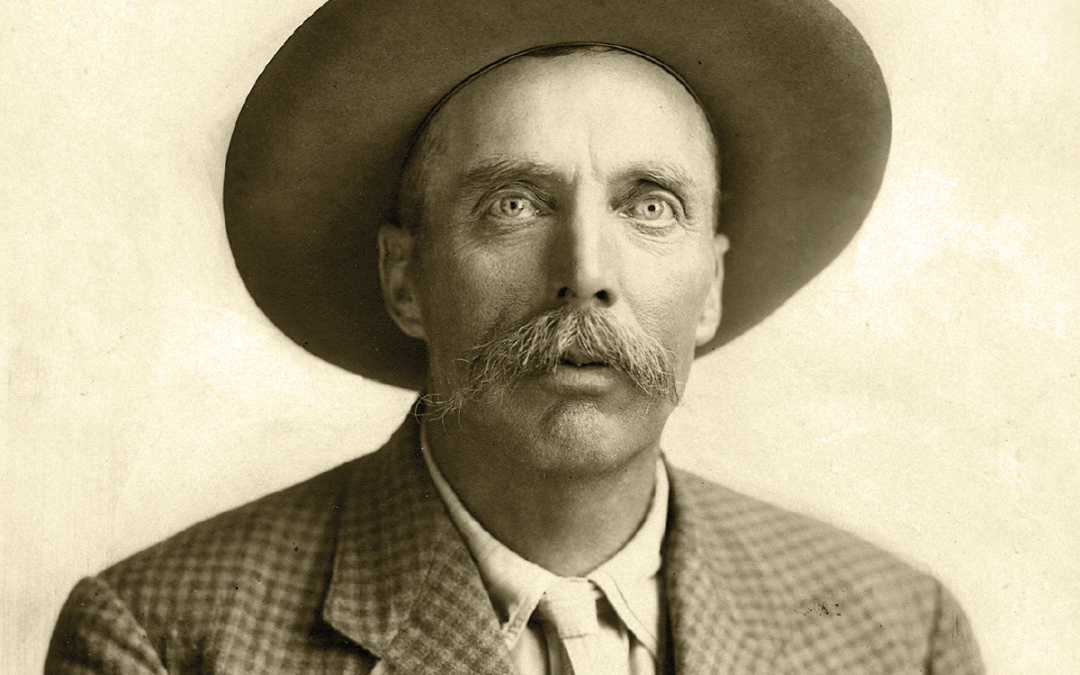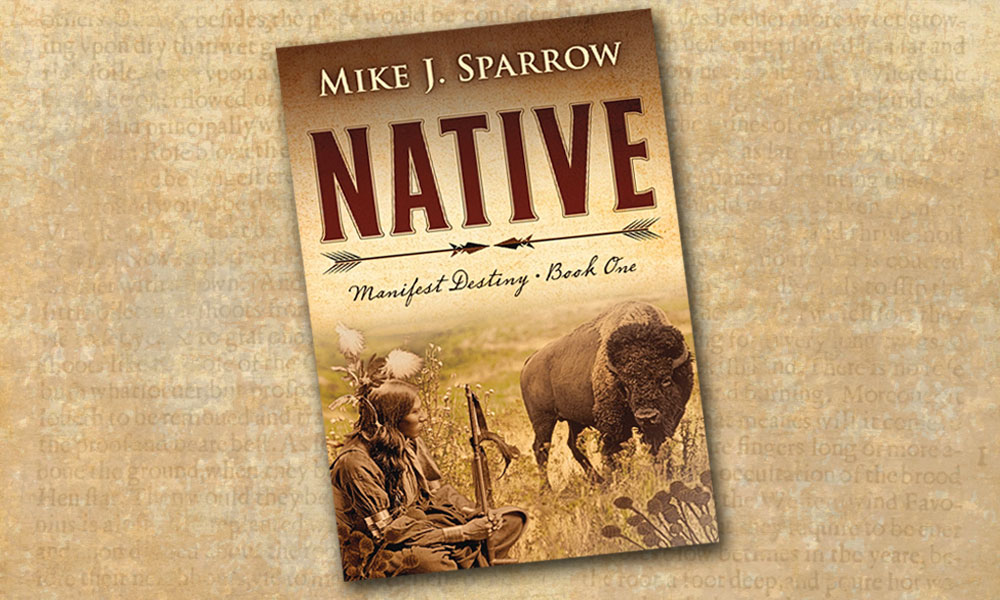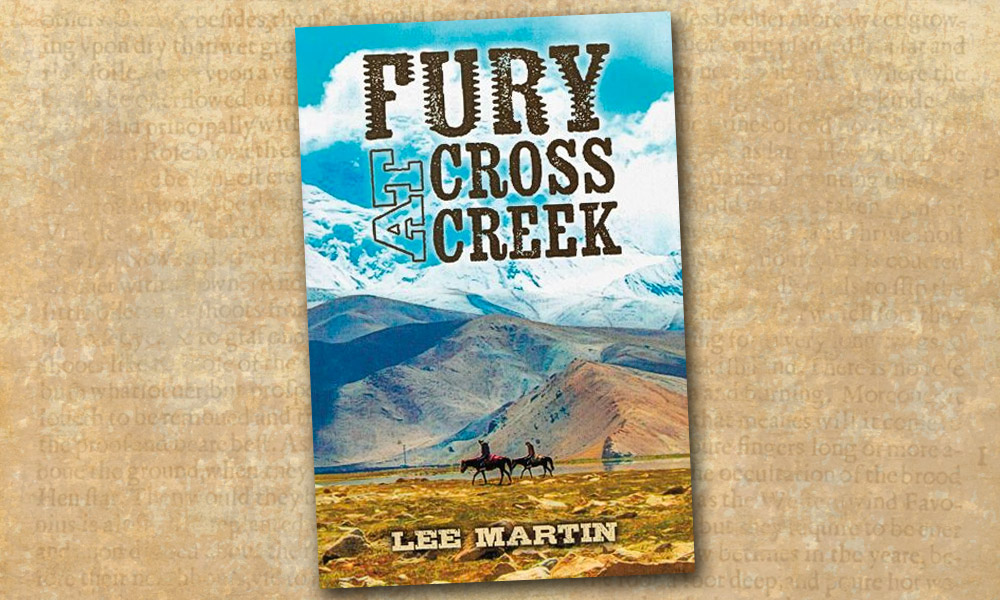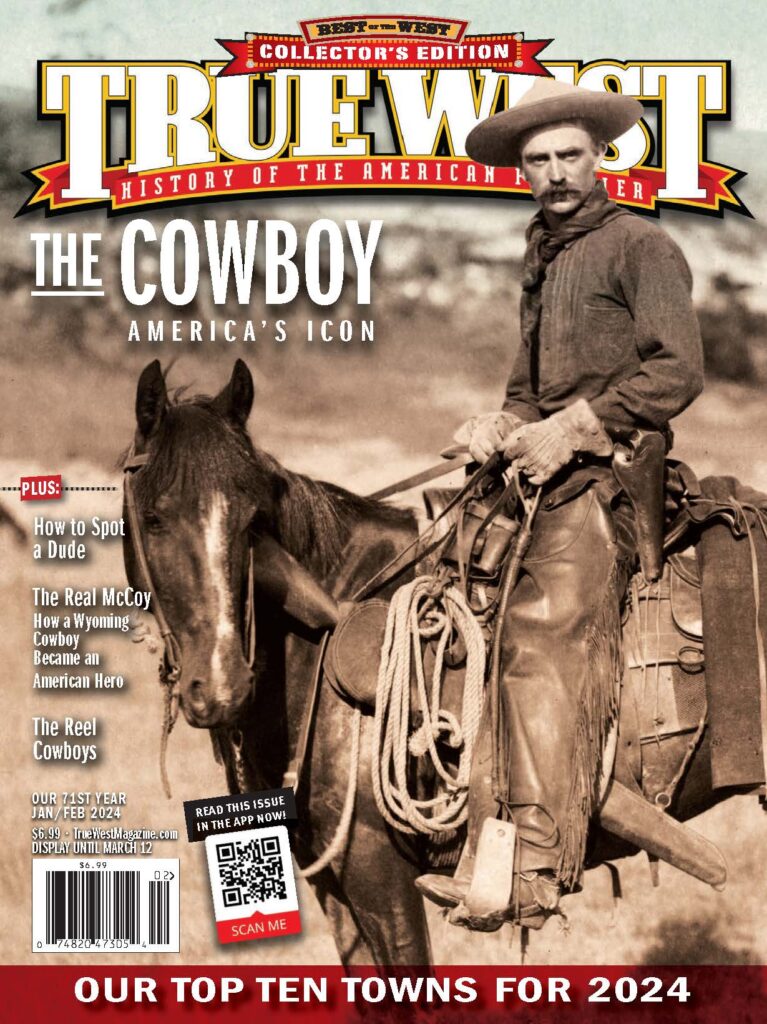The Wild, Wild West
Western writers—and True West’s editors—are fighting hard to keep the genre alive.
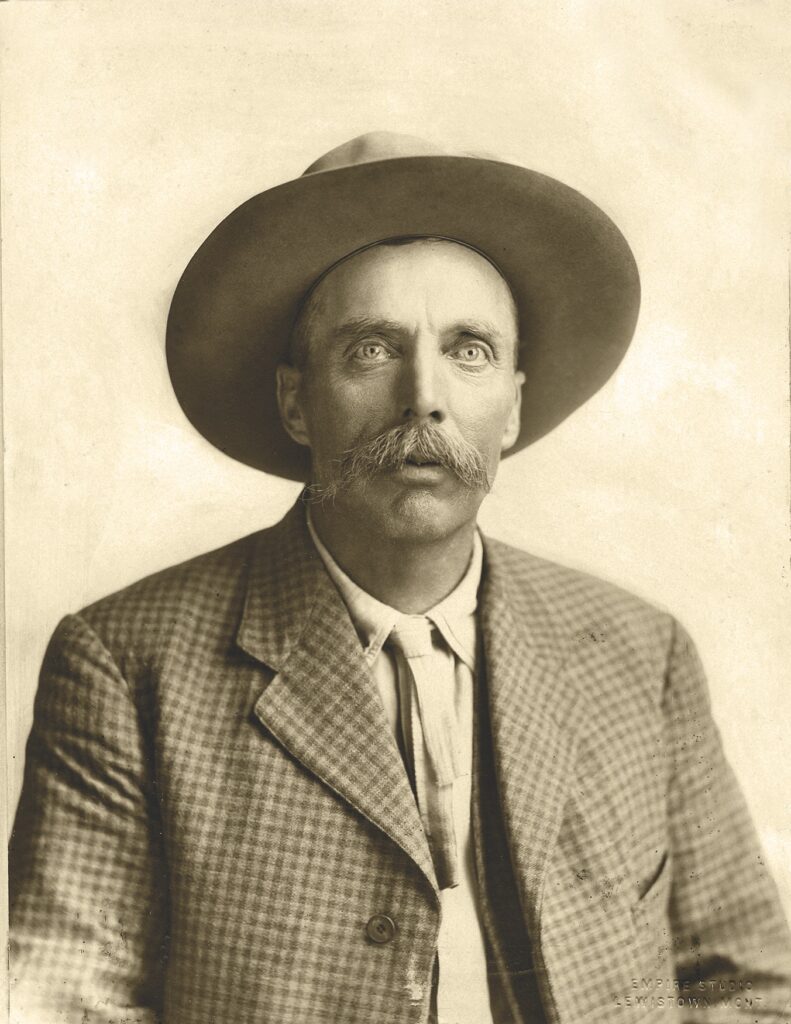
If you love to read about the Old West, True West’s era of publishing since 1953 has been a glorious time for writers, researchers, scholars and readers. The genre and the scholarship have each grown exponentially and inclusively. Under the tutelage of academics and grassroot historians and authors in such organizations as Westerners, Western Writers of America, Western History Association, Wild West History Association (formerly the National Association for Outlaw and Lawmen History and the Western Outlaw-Lawman History Association), Women Writing the West and local and state historical associations throughout the country, we have all benefited from their passion for teaching, researching, writing, publishing and presenting on their topics.
Is every aspect within the broad Western history canopy your favorite—or mine? No, but that’s okay.

Artwork Courtesy Thomas E. Minckler
Does every writer, every researcher, every editor, every publisher, every documentarian or filmmaker get it right every single time? No they don’t, and they never will.
But that does not diminish their earnestness or desire to get it right—and tell a story that illuminates, provokes or inspires ethos, pathos or logos.
I believe Western fiction and nonfiction have a long and bright future. The future may look a lot different than the analog world of hard copy magazines and books we have grown up with; the future may all be digital, streaming and blogs, but the conversation and conviviality of our Western writing community will remain relevant and purposeful if we are supportive of and energized to adapt to the new paradigms of publishing.
I believe it has been a great ride so far and there are many more great trails of writing and publishing about the West we so dearly love ahead of us for many years to come.







WESTERN HISTORY
BEST AUTHOR AND HISTORICAL NONFICTION BOOK OF THE YEAR
Thomas E. Minckler and Montana: A Paper Trail (Montana Historical Society Press)
Every year I receive a handful of books that should be considered objects of art as much as they are books. Thomas E. Minckler’s Montana: A Paper Trail is one of those tomes. From the endpapers to the final page, Minckler’s masterpiece is an entertaining and visual travelogue of Montana history. As Dr. Brian W. Dippie notes in his foreword, “In this sumptuous book, Tom lays his treasures out before our eyes, and provides the context necessary to understand the claim each holds on his attention. When I look at what he has packed in his treasure chest, I find my vision tinged with green.”
While Minckler’s tome is hefty, and readers will need a good-sized table to enjoy reading it, the coffee table book is also a great resource for researchers.
Minckler’s end notes are extremely useful as are the hundreds of pieces of artwork, material ephemera and photographs from his personal collection. As the author says in his Introduction, “The pieces within the collection, embedded here into a historical narrative, guide the reader on a journey through the 19th century of the northern Plains, the Rocky Mountains and early Montana. It is a trail made of paper.”
mhs.mt.gov
Readers’ Choice
John Boessenecker’s Gentleman Bandit: The True Story of Black Bart, the Old West’s Most Infamous Stagecoach Robber (Hanover Square Press)
SPECIAL RECOGNITION IN WESTERN HISTORY PUBLISHING
In 2024 we’d like to recognize two Western authors for their contributions to Western history. First, John P. Langellier, who has just published his latest book, More Work Than Glory: Buffalo Soldiers in the United States Army, 1866-1916 (Hellon & Company), No. 37 in the “From Musket to Maxim, 1815-1914” series. Few authors in the past 45 years have published as much on the Buffalo Soldier and the frontier Army of the West. His titles include Fighting for Uncle Sam: Buffalo Soldiers in the Frontier Army; Bluecoats: The U.S. Army in the West, 1848-1897; and Custer: The Man, the Myth, the Movies. His series on American Army uniforms is unmatched and very few in the field can equal his knowledge on the subject matter. (Langellier is also a contributor to this issue; see his feature “The Real McCoy” on page 24.)
Second, and equally, we’d like to recognize Roy B. Young for his 12 years of service to the Wild West History Association as editor of the WWHA Journal. Young’s leadership and fine editing have helped many youthful researchers and veteran historians achieve their goals of publishing their hard-earned research in the field of Western history. In addition, Young, with Gary L. Roberts and Casey Tefertiller, edited A Wyatt Earp Anthology: Long May His Story Be Told, which received the 2019 WWHA Six-Shooter Award for
Best Book on Wild West History.
Thank you, John P. Langellier and Roy B. Young. Your dedication to your craft, your characters and skills have been a great service to the community of Western history research, editing and publishing.


WESTERN HISTORY PUBLISHING
Where is Western history publishing going this year? My hopes are that publishers stay the course and Western publishing continues to flourish in 2024, even if it means fewer imprints are publishing just on the 19th-century West. But we have a lot of hard work ahead of us to save the genre. As I wrote in the November 2023 issue, we must be consumers of Western culture and share that passion for the West with the next generation. Whatever platform your family and friends enjoy the most, share it, trumpet it, praise it and give it as a gift. A broad, popular consumer interest in the West will not survive unless it is shared and celebrated with our younger friends and family members.
BEST WESTERN HISTORY BOOK PUBLISHER
TwoDot, Lanham, MD
An imprint of Globe Pequot, the trade division of Rowman & Littlefield, TwoDot must be credited for its determination to keep the Western history genre in print and affordable for popular audiences. We look forward to a strong catalog of Western history from TwoDot in 2024.
twodotbooks.com
Readers’ Choice: TIE
Montana Historical Society Press St. Martin’s Press

BEST UNIVERSITY PRESS
University of Nebraska Press, Lincoln, NE
Since 1961, Bison Books at the University of Nebraska Press has been a leader in publishing Western history. Bison has continued to do so, and in 2023 the imprint has taken a leadership position in the genre. We hope they continue to do so for many years.
nebraskapress.unl.edu
Readers’ Choice: TIE
The University of Oklahoma Press
University of New Mexico Press

WESTERN FICTION
In 2023, Western fiction publishing was hit hard with Five Star’s decision to cease publishing Old West novels. It has maintained a shorter list with its Thorndike oversized print division, but it left a lot of authors scrambling.
Pinnacle Books in New York, New York, and Wolfpack Publishing in Las Vegas, Nevada, have maintained their lists and are really the last two imprints publishing traditional Western fiction in any volume.
A small emerging imprint is Silverado Press which published Jeff Mariotte’s Byrd’s Luck & Other Western Stories: Traditional Western Fiction and Western Horror Fiction and Howard Weinstein’s Galloway’s Gamble 2: Lucifer & The Great Baltimore Brawl.
Western fiction is being published by small houses, authors publishing independently, a few university publishers, and an occasional novel set in the West makes it through the editor-agent steeplechase in New York. But, on the horizon, there are no Larry McMurtrys emerging in today’s publishing atmosphere in the Big Apple.

BEST HISTORICAL WESTERN NOVELIST AND NOVEL
Paulette Jiles and Chenneville: A Novel of Murder, Loss and Vengeance (William Morrow)
New York Times bestselling author of News of the World, Paulette Jiles’s latest, Chenneville, is a well-researched, sharply written novel that takes the reader on a journey from the post-Civil War Midwest to the Texas frontier. Jiles, who writes from her home in San Antonio, Texas, was a nominee for the 2016 National Book Award for News. Cheneville is her sixth Western novel, and readers should take another look at her body of work that is set during and after the Civil War, in Missouri, Texas and the Southern Plains. I am eager to read the next volume by the Missouri native, who is also an accomplished poet, essayist and memoirist.
harpercollins.com
Readers’ Choice
Johnny D. Boggs and Longhorns East (Pinnacle/Kensington)


BEST FIRST-TIME AUTHOR
Ride a Fast Horse (A Captain Tom Skinner Western, Book 1) by Kevin Warren (Pinnacle Books)
Congratulations to Wyoming author Kevin Warren on his first Western novel. A lifelong cowboy who grew up in Arizona’s Verde Valley, Warren spent 20 plus years on the back of horse guiding hunters into the Wyoming back country before writing his first book of Western fiction. Warren’s novel is inspired and informed by his many years on Wyoming’s rough and rugged trails—and the characters he has met along the way. In addition to guiding and outfitting, Warren has worn many hats in the horse business, including working as a farrier, rancher and riding instructor. His follow-up, The Night Holds Terror, will be released in 2024.
kensingtonbooks.com

BEST WESTERN FICTION PRESS
Pinnacle Books, New York, New York
In the annals of Western fiction publishing, Gary Goldstein is one man who has not received enough recognition for keeping the genre alive and viable for booksellers.
For over 20 years he has had the reins of mass market Westerns at Pinnacle, and I credit Goldstein for the imprint’s success. He is a master at maintaining strong author brands including William W. Johnstone and J.A. Johnstone, while cultivating two generations of Western authors, many of whom are now household names—Johnny D. Boggs, Max McCoy, Charles G. West, Dusty Richards, Brett Cogburn and Terrence McCauley.
kensingtonbooks.com
Readers’ Choice
Wolfpack Publishing, Las Vegas, NV


BOOKSELLING
One of the joys of travel is visiting bookstores, and travelers will discover all across the West that the pulse of the local community can be discovered in the neighborhood bookstore. True West’s editors applaud the independent bookstore owners who keep their stores open in their towns across the West. If you have a favorite Western bookshop, let us know; we’d love to share it in an upcoming issue of the magazine.
BEST WESTERN HISTORY BOOKSTORE
Cactus Book Shop, San Angelo, TX
After a tour of historic Fort Concho, don’t miss a chance to visit the downtown San Angelo landmark Cactus Book Shop. With shelves overflowing with Western Americana, West Texas history and Texana, there is something for everyone who loves the Old West. And don’t forget, Cactus has the largest selection of Elmer Kelton books in the country.
cactusbookshop.com
Readers’ Choice
Collected Works, Santa Fe, NM

Courtesy San Angelo CVB

